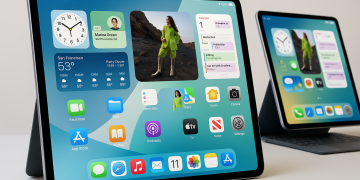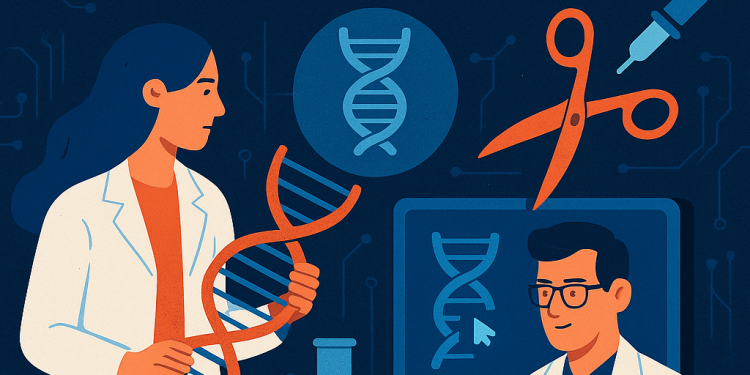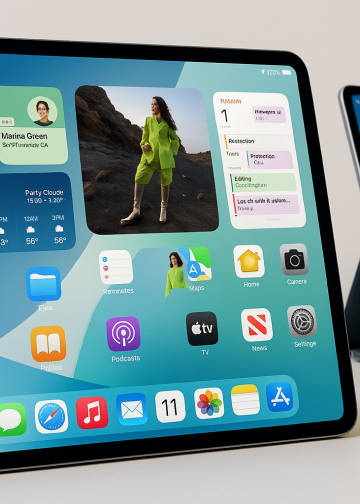Introduction: A New Era of Genetic Research in the USA
Imagine a world where inherited diseases can be prevented before birth, cancer can be treated at the DNA level, and food allergies can be eliminated with a simple tweak. Thanks to gene editing USA and CRISPR technology, that world is coming closer every day. Over the past decade, the rise of CRISPR and related advances in biomedical science have revolutionized what’s possible—not just in the lab, but in real hospitals and clinics across America.
In this article, we’ll explore the history and science of gene editing, the breakthroughs powered by CRISPR, the promise and controversy of editing DNA, and how American researchers are leading the global charge toward a healthier future.
1. What is CRISPR? The Science Explained
CRISPR (Clustered Regularly Interspaced Short Palindromic Repeats) is a natural defense system first discovered in bacteria, which use it to recognize and destroy viral invaders. Scientists realized they could repurpose this system as a precise “molecular scissors” to cut and modify DNA at targeted locations.
How does CRISPR technology work?
- A guide RNA molecule is designed to match the DNA sequence you want to edit.
- The Cas9 protein acts like scissors, cutting the DNA at the chosen spot.
- The cell then repairs the break—sometimes introducing changes, adding, or removing genetic material in the process.
This simple, inexpensive, and precise method has changed genetic research forever.
2. The Rise of Gene Editing in America
While CRISPR’s discovery began overseas, it was quickly adopted—and advanced—by American universities, biotech firms, and medical centers. Today, the USA is the epicenter of much of the world’s genetic research.
Major milestones:
- In 2012, Jennifer Doudna (UC Berkeley) and Emmanuelle Charpentier published the paper that first described CRISPR-Cas9 gene editing.
- The first CRISPR-edited human cells in the USA appeared in clinical trials in 2016.
- Ongoing breakthroughs are being reported from leading research hospitals like the Broad Institute (MIT/Harvard), Stanford, and Mayo Clinic.
3. CRISPR Technology in Action: Medical Breakthroughs
a. Treating Inherited Diseases
CRISPR holds particular promise for inherited disorders that are caused by a single defective gene, such as:
- Sickle cell anemia
- Cystic fibrosis
- Muscular dystrophy
- Huntington’s disease
Early trials have shown success in treating sickle cell anemia and beta thalassemia, offering hope to patients previously dependent on lifelong transfusions and therapies.
b. Cancer Research and Immunotherapy
Gene editing allows scientists to modify a patient’s immune cells, making them better at targeting and destroying cancer cells. CAR-T cell therapy, which uses gene-edited immune cells, has shown remarkable results for some blood cancers.
c. Fighting Infectious Diseases
Researchers are exploring ways to use CRISPR to fight HIV, hepatitis, and even certain forms of COVID-19—by editing the DNA or RNA of viruses and human cells to block infection.
d. Organ Transplants
Gene editing is being used to modify pig organs so they can be safely transplanted into humans, potentially solving the organ shortage crisis.
4. Beyond Medicine: CRISPR in Agriculture and Industry
While biomedical science garners headlines, gene editing is also revolutionizing American agriculture and biotechnology:
- Creating disease-resistant crops and livestock
- Reducing the need for pesticides and antibiotics
- Engineering plants to absorb more carbon, helping fight climate change
- Developing new biofuels and industrial materials
5. The Ethics and Controversies of Gene Editing
With great power comes great responsibility. The ability to rewrite DNA raises tough questions:
- Should we edit the genes of embryos or future generations (“germline editing”)?
- How do we ensure CRISPR is used safely and equitably?
- Who decides which traits are “normal” or desirable?
In 2018, a controversial experiment in China led to the birth of CRISPR-edited babies. In response, American scientists have called for strict oversight and international guidelines, with a focus on safety, transparency, and consent.
6. Regulatory Landscape in the USA
In the United States, gene editing in humans is carefully regulated:
- The Food and Drug Administration (FDA) and National Institutes of Health (NIH) oversee trials and therapies.
- Germline editing (permanent changes to DNA passed to future generations) is prohibited in clinical practice.
- Each new therapy is reviewed for safety, efficacy, and ethical considerations.
For agriculture and biotech, the U.S. Department of Agriculture (USDA) and Environmental Protection Agency (EPA) also play key roles.
7. Recent Breakthroughs and Success Stories
a. Sickle Cell Cure
In 2023, several American patients became essentially cured of sickle cell disease after receiving a one-time CRISPR-based treatment. This success paves the way for wider use in genetic blood disorders.
b. Vision Restoration
CRISPR is being used in clinical trials to restore sight for patients with rare inherited forms of blindness—some have reported major improvements after decades without vision.
c. Cancer Immunotherapy
Customized, CRISPR-edited immune cells are now being deployed in multiple cancer centers, giving new hope for patients with previously untreatable tumors.
8. Challenges Ahead for Gene Editing USA
While the future looks bright, obstacles remain:
- Off-target effects: Sometimes, CRISPR makes unintended changes in DNA, raising concerns about safety.
- Delivery: Getting gene-editing tools to the right cells in the body is complex.
- Access and affordability: Cutting-edge therapies can be expensive; making them available to all Americans is a major challenge.
- Public trust: Education and transparency are essential to avoid fear or misunderstanding.
9. The Future: What’s Next for CRISPR and American Biomedical Science?
a. Next-Generation CRISPR
Scientists are developing more precise, versatile versions (like CRISPR-Cas12 and base editing) that minimize side effects and expand what’s possible.
b. Personalized Medicine
With advances in genetic screening, therapies can be tailored to an individual’s unique DNA—making medicine more effective and less risky.
c. Prevention Over Treatment
Gene editing could move healthcare from treating symptoms to preventing diseases before they start—even in the womb.
d. International Leadership
American research institutions and biotech companies are leading global collaborations, ensuring the US remains at the forefront of biomedical science and medical breakthroughs.
10. Table: CRISPR Applications and Their Impact
| Application Area | Example Breakthroughs | Impact on Society |
|---|---|---|
| Blood Disorders | Sickle cell disease therapy | Cures for previously untreatable conditions |
| Cancer | Customized CAR-T immunotherapy | New hope for advanced cancers |
| Infectious Diseases | HIV, hepatitis, COVID-19 research | Potential eradication |
| Blindness | Vision restoration trials | Improved quality of life |
| Agriculture | Disease-resistant crops | Safer, more sustainable food |
| Organ Transplant | Pig-to-human gene editing | More organs available, saved lives |
11. Resources and Further Reading
- Broad Institute – CRISPR Research
- National Institutes of Health – Genome Editing
- American Society of Gene & Cell Therapy
- U.S. National Library of Medicine – Genetics Home Reference
- FDA – Human Gene Therapy
Conclusion: A Revolution in the Making
CRISPR technology and gene editing are more than scientific marvels—they are tools of hope, healing, and progress. American biomedical science is changing the world, one breakthrough at a time. As we navigate the promises and challenges of this revolution, one thing is clear: the future of medicine, food, and even life itself is being rewritten in the USA’s laboratories and hospitals.
The journey is just beginning. With responsible innovation, ethical oversight, and a commitment to serving all, gene editing in America can help us conquer diseases, feed the world, and unlock human potential in ways we’re only starting to imagine


















































